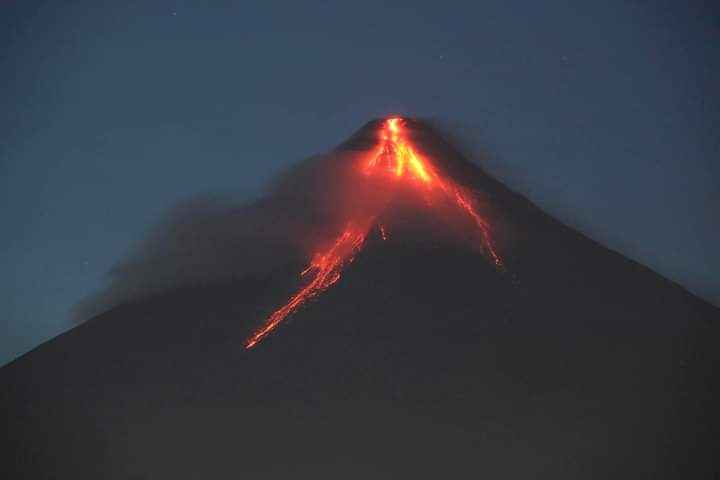Mayon eruption: 14,000 evacuated, experts warn activity could last months
Alarm is growing after volcano erupts in south-eastern coast of Luzon. The lava is flowing slowly but consistently, with toxic fumes and rockfalls putting residents at risk. The Diocese of Legazpi mobilises to bring assistance.
Manila (AsiaNews) – As lava from Mayon volcano continues to flow, people continue to pour into evacuation centres, where they might have to remain for a long while, experts warn.
Located near the city of Legazpi on the south-eastern coast of Luzon Island (Albay province), the volcano is famed for its activity.
The lava, which has been moving slowly but consistently for the past week down from the 2,462-metre-high top, does not pose any immediate threat, but people remain at risk from toxic fumes and rockfalls.
About 14,000 residents have been moved out of a six-kilometre radius around the mountain, housed in schools and emergency shelters.
The authorities are already ready to evacuate a wider area if the situation should require it; meanwhile, despite a ban, many onlookers remain captivated by the spectacle.
While Philippine emergency services have fine-tuned their capacity to respond to and limit the impact of the forces of nature, their limited resources will be sorely tested to provide food, drinking water and other necessities.
In view of this, the Diocese of Legazpi through its Social Action Center and in cooperation with local parishes has already mobilised its own trained emergency staff and launched a campaign to collect donations in cash and kind.
Mayon is one of 24 active volcanoes in the Philippines. In the last four centuries it has erupted some 50 times, with the most destructive in 1814 with 1,200 deaths.
The mountain is also a popular tourist spot, renowned for its perfect cone, in a mostly farming region, but its activity makes life hard for the communities that dot the bottom of its slopes. Ash and toxic gas emissions are permanent threats, reaching even faraway urban areas.
The worst eruption in living memory to hit the Philippines and the world occurred on 15 July 1991 on Mount Pinatubo, near the city of Angeles, north of Manila.
Following a swarm of earthquakes and phreatic explosions (steam-blast eruptions) that lasted months, the final explosion of the lava dome that had formed at the summit sent an ash cloud 40 km (25 mi) into the atmosphere.
Once the ash started to follow back, it blanketed thousands of square kilometres with fresh volcanic deposits as much as 200 metres thick. When torrential rain followed, it turned into mudflows that crashed down the slopes, covering fields and villages with material that later hardened.
Some 250,000 people were displaced, many of whom never went back, while the region’s appearance was changed forever.
At least two million Filipinos suffered the consequences of the volcanic event, whose impact on world climate was felt for years.
The final death toll was 847, killed mostly under roofs that collapsed from the weight of ash mixed with water.
16/01/2018 09:41







.png)










